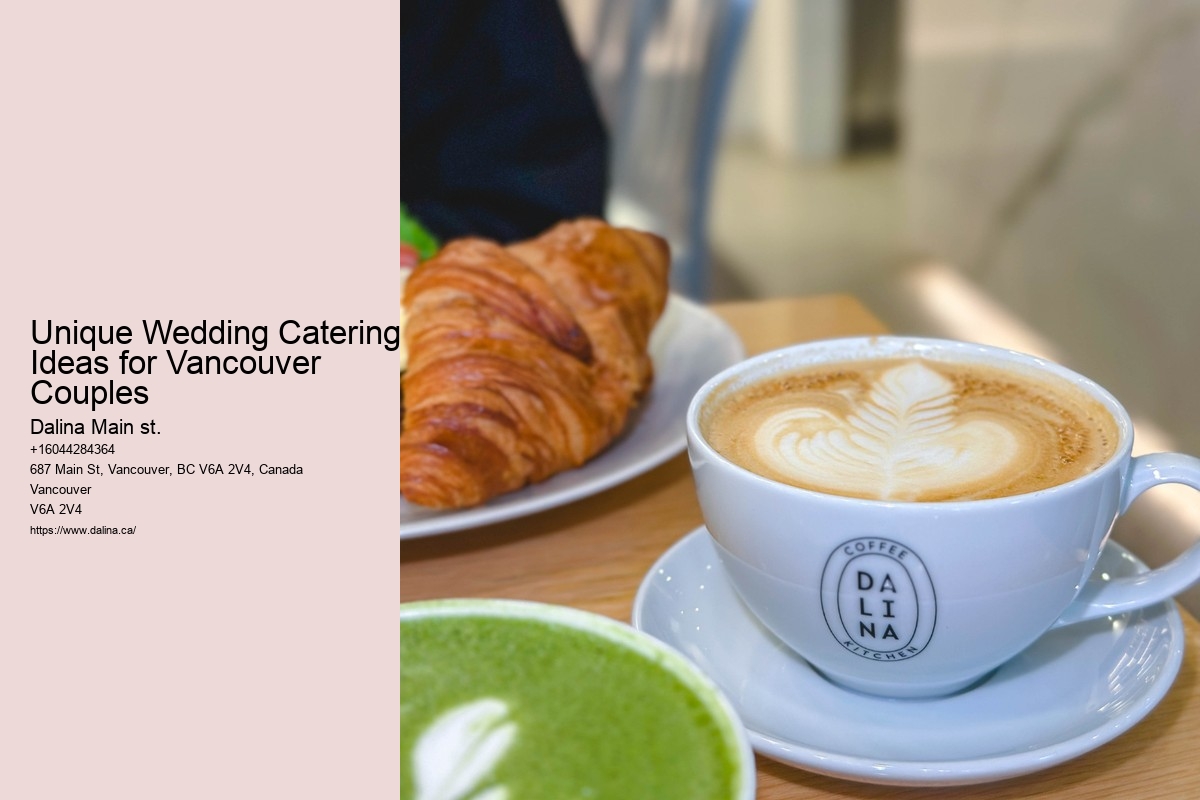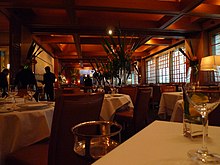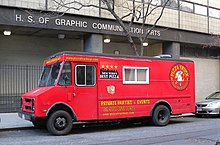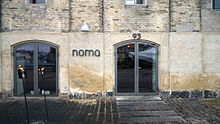Food Truck Extravaganza for a Casual Yet Trendy Dining Experience
Ah, the joyous occasion of a wedding in Vancouver – a city that's just brimming with vibrant culture and, dare I say, some of the most inventive culinary scenes in all of Canada.
Unique Wedding Catering Ideas for Vancouver Couples - Vancouver Plated Dinner Catering
- Vancouver Corporate Event Catering
- Cultural Cuisine Caterers
- International Cuisine Catering
- Birthday Party Catering
- Conference Catering Vancouver
- Vancouver Garden Party Catering
- Office Catering Vancouver
- Private Chef Vancouver
- Gluten-Free Catering Vancouver
- Craft Services Vancouver
- Beverage Services Vancouver
- Vancouver Catering Recommendations
- Custom Catering Menus
- Personal Chef Services
- Finger Food Catering Vancouver
- Pop-Up Catering Vancouver
- Holiday Party Catering
- Dinner Catering Services
- Holiday Feast Catering
- Gourmet Boxed Lunch Catering
Imagine this: a fleet of food trucks, each one bursting with its own unique flavors, parked right there at your wedding venue. It's casual, yeah, but don't think for a second that it ain't trendy! Guests can meander from truck to truck, their taste buds taking a gastronomic journey that's as eclectic as it is delightful.
Now, I know what you might be thinking – "Food trucks at a wedding? Is that sophisticated enough?" But here's the thing (and trust me on this), food trucks have seriously upped their game. Vancouver Chef-Prepared Catering We're talking gourmet offerings like succulent lobster rolls, artisanal wood-fired pizzas, and even delicate sushi prepared right before your starry-eyed guests! And the best part? There's something for everyone. Got a cousin who's vegan? No problem! There's a truck for that. Uncle Joe's gluten-free? He's covered too!
But it's not just about the food, oh no. It's about the experience! Picture your wedding under the open sky, strings of twinkling lights above, and the buzz of excited chatter as people dig into a smorgasbord of street food delights. It's laid-back yet chic, a reflection of the beautiful city itself.
And let's not forget the Instagram factor (because you know it matters)! Every corner of this extravaganza is a photo op waiting to happen.
Unique Wedding Catering Ideas for Vancouver Couples - Lunch Catering Services
- Mobile Catering Services
- Vancouver Seafood Catering
- Dessert Catering Vancouver
- Food Delivery For Events
- Vancouver Fine Dining Chef Services
- Vancouver Party Catering
- Wedding Catering Services
- Sustainable Catering Solutions
- Summer Party Catering
- Dinner Buffet Catering Vancouver
- Gourmet Catering Vancouver
- Lunch Catering Vancouver
- Farm-To-Table Catering
- Gourmet Food Vancouver
- Breakfast Catering Vancouver
- Special Event Catering
- Themed Event Catering
- Local Caterers Vancouver
- Small Event Catering
So, to all you Vancouver couples out there, why not take the road less traveled for your big day? Say no to the conventional, and yes to a feast that's as memorable as your love for each other. A Food Truck Extravaganza is not just a meal; it's a culinary adventure – and your guests will thank you for it!
Who knew that "I do" could taste so good, huh? Now, go on and get planning – those trucks aren't gonna book themselves!
Pacific Northwest Seafood Feast Highlighting Local Delicacies
When envisioning a wedding in the picturesque city of Vancouver, one can't help but dream of a catering spread that truly reflects the local bounty. Imagine this: a Pacific Northwest Seafood Feast, boasting the freshest and most succulent delicacies straight from the nearby waters!
Now, let's dive in – figuratively, of course! The starters could include a tantalizing array of oysters (oh, those plump, juicy morsels!), harvested from the very shores that frame our beloved city. They're not just any oysters; they're a conversation starter, a taste of the ocean's briny kiss. And how 'bout them spot prawns? Guests would be raving about their sweet, delicate flavor for weeks.
Moving on to the mains, imagine the delight as a cedar-planked salmon makes its grand entrance. It's been kissed by the smoky caress of the grill, its flesh flaking away with a mere nudge of the fork. It's not just food; it's a testament to the Pacific Northwest's culinary heritage!
Let's not forget the sides – no feast is complete without 'em. A vibrant salad with greens as fresh as the morning dew, perhaps dotted with colorful, edible flowers. They're not just pretty; they're a darn good bite, too.
And what's a feast without a bit of drama? Picture a crab boil that becomes the evening's spectacle, with Dungeness crabs, corn on the cob, and new potatoes all mingling in a pot big enough to feed an army (or at least your wedding guests). Vancouver Catering Equipment It's a hands-on experience, one that'll have guests chatting and laughing, sleeves rolled up and bibs on, diving into the communal celebration of food.
But wait, there's more! For those who might not fancy seafood, there's gotta be alternatives. A selection of farm-to-table vegetarian dishes, roasted root vegetables, or artisanal breads could round out the menu, ensuring there's something for everyone.
In conclusion, a Pacific Northwest Seafood Feast isn't just a meal; it's a memorable occasion, one that highlights the very essence of Vancouver. It's unique, it's flavorful, and it's undeniably West Coast.
Unique Wedding Catering Ideas for Vancouver Couples - Office Catering Services
- Small Event Catering
- Corporate Lunch Delivery
- Meal Prep Services Vancouver
- Caterer Vancouver Bc
- Vancouver Corporate Event Catering
- Cultural Cuisine Caterers
- International Cuisine Catering
- Birthday Party Catering
- Conference Catering Vancouver
- Vancouver Garden Party Catering
- Office Catering Vancouver
- Private Chef Vancouver
- Gluten-Free Catering Vancouver
- Craft Services Vancouver
- Beverage Services Vancouver
- Vancouver Catering Recommendations
- Custom Catering Menus
- Personal Chef Services
- Finger Food Catering Vancouver
Sustainable and Organic Catering Options for Eco-Conscious Couples
In Vancouver, where the lush landscapes meet urban sophistication, eco-conscious couples have a unique opportunity to reflect their values in their wedding celebrations. One area where this is particularly poignant is catering – and that's where sustainable and organic options come into the picture!
Now, imagine a feast that not only tantalizes your taste buds but also respects Mother Earth. That's right, we're talking farm-to-table freshness that's as good for the planet as it is for your guests. Think vibrant, locally sourced vegetables that haven't travelled halfway across the world (Oh, the carbon footprint!), and succulent, organic meats from animals raised without the use of antibiotics or hormones. It's about quality, not just quantity!
Sustainable catering isn't just about the food, though. It's the whole shebang – from biodegradable plates and cutlery to minimizing food waste by planning portions just right. Vancouver has a bevy of caterers who specialize in this kind of service. They're wizards at whipping up delicious dishes that leave a minimal environmental footprint, and trust me, they've got the creativity to make your special day stand out!
And don't worry, opting for a greener menu doesn't mean you'll be stuck with bland, predictable choices. Far from it! You could have a live sushi bar with sustainably caught fish, or a make-your-own taco stand with organic fillings. How about a seasonal fruit crumble for dessert, sweetened with local honey? On-Site Catering Vancouver The sky's the limit!
But wait, there's more! Incorporating organic wines and craft beers from local breweries can give your celebration an added touch of regional flair. Not to mention, it's a great conversation starter as your guests sip on beverages with a backstory.
However, it's important to remember (ah, there's that negation!) that sustainable and organic catering isn't just a trend; it's a statement. By choosing this route, you're not only ensuring a memorable feast, you're also taking a stand for the environment. And what better way to start your journey together than by making a positive impact?
In conclusion, for those couples in Vancouver looking to tie the knot, embracing sustainable and organic catering options can be a powerful way to express their commitment to each other and to the planet. It's a choice that says, "We care!" – and isn't that what love is all about?
Unique Wedding Catering Ideas for Vancouver Couples - Vancouver Catering Packages
- Mobile Catering Services
- Vancouver Seafood Catering
- Dessert Catering Vancouver
- Food Delivery For Events
- Vancouver Fine Dining Chef Services
- Vancouver Party Catering
- Wedding Catering Services
- Sustainable Catering Solutions
- Summer Party Catering
- Dinner Buffet Catering Vancouver
- Gourmet Catering Vancouver
- Lunch Catering Vancouver
- Farm-To-Table Catering
- Gourmet Food Vancouver
- Breakfast Catering Vancouver
- Special Event Catering
- Themed Event Catering
- Local Caterers Vancouver
Interactive Chef Stations for a Personalized Culinary Experience
When it comes to wedding catering in Vancouver, there's a trend that's been catching everyone's attention – interactive chef stations! Ah, but what exactly are they, you might ask? Well, imagine your guests mingling around, sipping on their drinks, while a chef prepares a dish tailored just for them right before their eyes. It's not just about the food, mind you; it's an entire personalized culinary experience that's sure to leave a lasting impression.
Now, let's dive in a bit deeper. Interactive chef stations break the mold of traditional catering where the meals are often predetermined and, let's be honest, a bit on the predictable side. Instead, they invite a sense of excitement and engagement.
Unique Wedding Catering Ideas for Vancouver Couples - Cocktail Party Catering
- Vancouver Fine Dining Chef Services
- Vancouver Party Catering
- Wedding Catering Services
- Sustainable Catering Solutions
- Summer Party Catering
- Dinner Buffet Catering Vancouver
- Gourmet Catering Vancouver
- Lunch Catering Vancouver
- Farm-To-Table Catering
- Gourmet Food Vancouver
- Breakfast Catering Vancouver
- Special Event Catering
- Themed Event Catering
- Local Caterers Vancouver
- Small Event Catering
- Corporate Lunch Delivery
One of the best parts about these stations is the versatility. You could have a sushi bar where guests pick their favorite fillings, a taco stand that's bursting with fresh, vibrant toppings, or even a gourmet burger station with all sorts of exotic condiments and cheeses. And for dessert? How about a crepe station with an array of sweet toppings – think maple syrup, fresh berries, or even a cheeky dollop of whipped cream!
But here comes the kicker – it's not just food that's on offer. Some stations pair the culinary delights with beverage options.
Unique Wedding Catering Ideas for Vancouver Couples - Office Catering Services
- Personal Chef Services
- Finger Food Catering Vancouver
- Pop-Up Catering Vancouver
- Holiday Party Catering
- Dinner Catering Services
- Holiday Feast Catering
- Gourmet Boxed Lunch Catering
- Vancouver Catering Menu Ideas
- Corporate Catering Vancouver
- Catering For Non-Profit Events
- Food Presentation Services
- Affordable Catering Vancouver
- Personalized Catering Services
- Party Catering Vancouver
- Catering Price Estimates Vancouver
- Vancouver Chef-Prepared Catering
- Vancouver Catering Packages
- Vancouver Plated Dinner Catering
- On-Site Catering Vancouver
- Catering Rentals Vancouver
So, why go for such a setup for your big day? Well, it's simple – no two plates are the same! Your guests, who probably have different dietary needs and preferences, won't be left poking at a dish they're not too fond of. And let's not forget the fun factor; it's quite the conversation starter, having a chef whip up a dish just for you. Plus, it adds an element of luxury and thoughtfulness to your wedding that cookie-cutter catering options just can't match.
In conclusion, interactive chef stations are a fantastic way to create a memorable and personalized culinary experience for your wedding in Vancouver. They reflect the city's vibrant food scene and offer a unique twist on traditional catering. Whether it's the sizzle of a steak on the grill or the gentle fold of a crepe, these stations are sure to tantalize the senses and leave your guests raving about the food long after the last dance (and isn't that what every couple wants?). So go ahead, make your special day even more unforgettable with a dash of interactive flair – your guests will thank you, and your taste buds will, too!
Fusion Menus Combining Diverse Culinary Traditions of Vancouver
Ah, Vancouver! A city where the tapestry of culinary traditions is as diverse as the landscape itself! Fusion menus, they're not just a trend here, but a way of life - a delicious, mouth-watering way of life, if I may say so. Vancouver Plated Dinner Catering When it comes to unique wedding catering ideas (and let's be honest, who doesn't want their special day to be remembered for years to come?), combining diverse culinary traditions is a surefire hit.
Imagine this: Your wedding guests, they gather 'round, their eyes wide with anticipation. What will the first course be? A delicate dim sum, perhaps, paying homage to Vancouver's rich Asian heritage. But wait, there's a twist! It's served with a side of zesty, homemade salsa, a nod to the vibrant Latin American community that spices up the city's food scene.
Now, let's talk main courses. Who would've thought that tender, perfectly cooked salmon, a local favorite, could be paired so seamlessly with the bold flavors of a Japanese miso glaze? It's a marriage (pun intended!) of West Coast freshness and Eastern umami that'll have your guests talking for months!
But we can't stop there, no sir! Desserts are where the real fusion magic happens. Picture this - not your average wedding cake, but a towering masterpiece of Italian tiramisu layers, separated by thin crepes infused with the sweet, aromatic essence of Indian cardamom. It's like a culinary tour around the globe, without ever leaving your seat!
And to wash it all down?
Unique Wedding Catering Ideas for Vancouver Couples - Vancouver Plated Dinner Catering
- Wedding Buffet Catering
- Affordable Catering Solutions
- Event Catering Vancouver
- Cocktail Party Catering
- Healthy Catering Options
- Home Catering Services
- Office Catering Services
- Vancouver Catering Equipment
- Lunch Catering Services
- Vancouver Chef-Prepared Catering
- Vancouver Catering Packages
- Vancouver Plated Dinner Catering
- On-Site Catering Vancouver
- Catering Rentals Vancouver
- Party Platters Vancouver
- Corporate Breakfast Catering
- All-Inclusive Catering Vancouver
Now, I know what you're thinking: "Can we really pull this off?" And the answer is, without a doubt, you can't not do it! (See what I did there?) With Vancouver's melting pot of food experts, your fusion wedding menu will be nothing short of spectacular.
So, let's raise a glass (or chopstick, or fork, or whatever suits your fancy!) to the happy couple and to a feast that'll be the talk of the town! With a fusion menu that combines the best of Vancouver's culinary traditions, your wedding will be one for the books! Cheers to love, life, and the joy of eating!
Gourmet Picnic Baskets for Outdoor or Countryside Weddings
Oh, the charm of a countryside wedding! Picture this: a serene setting with the majestic Vancouver mountains as a backdrop, and you, surrounded by your loved ones. But wait, there's something that could make it even more memorable – gourmet picnic baskets!
Now, I know what you're thinkin': "Picnic baskets at a wedding? Really?" But hear me out! Imagine each of your guests receiving their own little basket filled with artisanal treats. We're not talkin' about your average picnic fare here, no way. These baskets are brimming with the finest local cheeses, freshly baked bread, a selection of charcuterie that'll make your mouth water, and perhaps even a mini bottle of British Columbia's finest wine to toast with. And let's not forget the vegetarian and vegan folks! There'll be plenty of scrumptious options for them too.
But, here's the kicker – each basket (oh, they're gonna be so cute!) is not just a meal. It's an experience. Guests can grab their basket and find a cozy spot on the lawn, maybe even lay down a blanket, and enjoy a meal under the open sky. It's intimate, it's unique, and it's oh so chic!
Plus, it's a fantastic way to keep things COVID-friendly, ain't it? Each guest or household with their own basket means less mingling and less worry about who's touched what. Smart thinking, right?
And, let's not forget the little ones! Imagine their delight when they get a basket tailored just for them, with snacks and nibbles they'll actually eat (and love!). It's the little touches that turn a great wedding into an unforgettable one!
So, why not go against the grain (pun intended!) and opt for gourmet picnic baskets at your outdoor or countryside wedding? Trust me, it'll be a hit. Affordable Catering Solutions Your guests will be raving about it for years to come (and not just because of the typo on the menu card, oops!).
In conclusion, gourmet picnic baskets are more than just a meal; they're a statement that says, "We're laidback, we're classy, and we know how to throw a darn good party!" So, dear Vancouver couples, ready to take your wedding catering to a whole new level of awesome? Let's do it!
Seasonal Farm-to-Table Menus Showcasing British Columbia Produce
Oh, the charm of a wedding in Vancouver! There's something truly special about celebrating love amidst the breathtaking beauty of British Columbia. And for those couples looking to infuse their big day with a sense of place, what could be more fitting than a seasonal farm-to-table menu that showcases the bountiful produce of the region?
Picture this: tables adorned with the freshest ingredients, each dish telling a story of the local land and sea. It's not just about eating; it's an experience, a journey through the flavors of British Columbia. Healthy Catering Options The vibrant greens of spring, the juicy berries of summer, the hearty squashes come fall, and the root vegetables that take center stage in the winter - each season brings its own unique palate.
Imagine your guests, delighted as they tuck into a salad made with greens picked just that morning!
Unique Wedding Catering Ideas for Vancouver Couples - All-Inclusive Catering Vancouver
- All-Inclusive Catering Vancouver
- High-End Catering Vancouver
- Festival Food Catering
- Luxury Catering Vancouver
- Dinner Party Catering
- Catering Companies Vancouver
- Kid-Friendly Catering
- Fine Dining Catering
- Catering Discounts Vancouver
- Casual Lunch Catering
- Private Event Catering Vancouver
- Holiday Catering Vancouver
- Mobile Catering Services
- Vancouver Seafood Catering
- Dessert Catering Vancouver
- Food Delivery For Events
Now, it's true that not everyone's familiar with the farm-to-table concept, and some might even say it's a bit too unconventional for a wedding. But that's the beauty of it, isn't it? It's a celebration that's uniquely yours, and what better way to stand out than by serving a menu that's as fresh as it is thoughtful?
And don't worry if your Aunt Marge is a bit of a picky eater; there's something magical about food that's grown with care and prepared with love – it has a way of winning over even the most skeptical of guests (I've seen it happen!).
Sure, coordinating with local farmers and producers take a bit more effort, but the payoff is immense. It's not just about the taste, though that's a huge part! All-Inclusive Catering Vancouver It's about sustainability, supporting the local economy, and creating a connection between the land and your love story.
So here's a toast to the couples of Vancouver who dare to be different (and let's face it, a little daring is necessary when it comes to weddings, right?). Embrace the seasons, celebrate the local harvest, and create a feast that your friends and family will remember for years to come! Now, isn't that just a breath of fresh air?
Customizable Cocktail Bars with Local Craft Spirits and Mixologists
Oh, when it comes to spicing up wedding receptions, Vancouver couples are always on the lookout for that one-of-a-kind touch that'll make their special day memorable, am I right? And let's be real, who doesn't love a good cocktail? But, not just any cocktail, we're talking about customizable cocktail bars that boast the finest local craft spirits and expert mixologists ready to shake things up!
Now, imagine this: nestled in the heart of your wedding venue, a sleek bar setup where guests can watch mixologists – no, let's call them cocktail artisans – as they craft each drink with an artist's touch. It's not just about pouring a drink; it's a whole performance, and each guest is part of the show.
Unique Wedding Catering Ideas for Vancouver Couples - Corporate Breakfast Catering
- Vancouver Fine Dining Chef Services
- Vancouver Party Catering
- Wedding Catering Services
- Sustainable Catering Solutions
- Summer Party Catering
- Dinner Buffet Catering Vancouver
- Gourmet Catering Vancouver
- Lunch Catering Vancouver
- Farm-To-Table Catering
- Gourmet Food Vancouver
- Breakfast Catering Vancouver
- Special Event Catering
- Themed Event Catering
- Local Caterers Vancouver
- Small Event Catering
- Corporate Lunch Delivery
- Meal Prep Services Vancouver
- Caterer Vancouver Bc
What's truly fantastic (and let's not forget unique) is the local angle. Vancouver's got a thriving craft spirits scene, and showcasing these in your wedding adds that local charm that's hard to beat. It's like giving your guests a taste of the city's spirit – literally! And it ain't just about the alcohol; these cocktails come with a story, a connection to the land and the community that produced them. Talk about adding depth to your drink menu!
But hold on, it's not only about what's in the glass. The customization aspect is a game-changer. Fancy a cocktail that echoes your love story or maybe one that's a nod to how you met? Event Catering Vancouver (Oh, the possibilities!) Your guests can even put their twist on classics or conjure up something new, guided by the savvy mixologists. It's an interactive experience that'll get people talking, laughing, and sipping with delight!
And hey, we can't forget about those who might not indulge in alcohol; the mixologists can whip up some mean mocktails too. Nobody's left out, and that's the beauty of it!
In a nutshell, customizable cocktail bars with local craft spirits and mixologists are like the secret ingredient to a wedding that's as unforgettable as it is joyful. It's not just a trend; it's a celebration of local craftsmanship, personal touches, and of course, love. So, cheers to that!

























